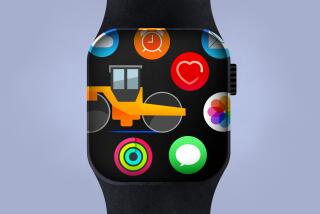An Ex-Insider’s View of What Apple Needs
- Share via
When the Mac was born, Apple created a concept that proved to be its most durable contribution to computer marketing: evangelism. While promoting a sense of quasi-religious reverence among users, it sent out teams of proselytizing marketers, led by promotional guru Guy Kawasaki, to convince software makers to embrace a new operating system that hardly anyone yet used.
Kawasaki’s crusaders can claim much of the credit for the Mac’s early success.
Over the years, however, Apple lost its way with the independent developers that made the most of the Mac’s software and add-on hardware. Once the champion of the little companies that often came up with the big ideas, Apple instead spent a lot of time eating its lunch by creating competing products flaunting the powerful Apple logo. And Apple became increasingly remote, hard to work with and stingy with co-marketing dollars.
Software developers, not surprisingly, started to desert the Mac as its market share declined. To rebuild bridges with the companies that in effect keep the Mac afloat, then-Chief Executive Gilbert Amelio in 1996 brought in one of the original Mac developers, Heidi Roizen, founder and CEO of clip-art producer T/Maker and former president of the Software Publishers Assn. trade group.
Developers trusted Roizen and figured that if anyone could turn around Apple’s developer relations, she could. But in those rudderless days when Apple was losing hundreds of millions of dollars, her task was probably hopeless.
“Quite honestly, I could see that there were differing camps about how to run the company and didn’t want to be in the conflict, given that I was trying to support a community” of developers, she said in a recent interview.
After a year of frustrating 70-hour weeks, Roizen joined the legions of ex-Apple executives. Since then, she’s led a more relaxed life as an independent consultant, and I figured she’d had time to develop some detached insights into Apple’s current trajectory.
She credits interim CEO Steve Jobs with enforcing a coherence that was absent during her tenure.
“When he left Apple [in 1985], his DNA stayed, and it’s like people are willing to accept his leadership in a way that they wouldn’t from anyone else,” she said.
*
But the key to Apple surviving and thriving, she said, is building a healthier ecosystem--the constellation of relationships among companies whose mutual financial interests revolve around the Mac.
Years ago Apple fostered symbiotic relationships among the desktop publishing heavyweights, thus ensuring its predominance over its competitors, and it extended those advantages to many other markets. Now the big question facing Apple, Roizen said, is how to develop a healthy ecosystem as a niche player.
“You can’t be a 5% player across the board. You need to be a 0% player in some markets and a 40% or 80% player in others,” she said. “So inevitably, some users are not going to be happy.” And some developers will also be ignored--hopefully not the ones that become the next Intuit or Yahoo.
Apple has targeted education and publishing as key areas to keep or extend that 40%-plus share. And with the new iMac as a draw, according to Clent Richardson, Apple’s senior director of worldwide developer relations, Apple is going to reclaim consumer computing. That means consumer titles and games.
Macworld Expo, which begins July 8 in New York, would be the logical place for Apple to show some results with the announcement of sorely needed hardware add-ons for the iMac’s universal serial bus port, as well as some consumer software that the iMac will need to compete in a ferocious low-end market.
The other ongoing challenge as a niche player, Roizen said, is to make sure that “just because you want to think different, you shouldn’t have to pay the consequences of being different.”
*
Roizen believes Apple needs to keep the Web experience equal to or better than that offered by the Windows standard and work aggressively with developers to extend seamless compatibility with the rest of the computing experience, including cross-platform file translation for all the key applications.
Of course, nothing succeeds like two profitable quarters, machines with competitive speed, the iMac design and the OS X--which should greatly reduce the pain that software developers will feel in preparing their Mac applications for use with a modern operating system.
A little success has given developers the best reason in years to stick with the Mac.
*
Times staff writer Charles Piller can be reached via e-mail at [email protected].






